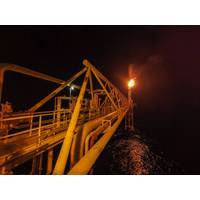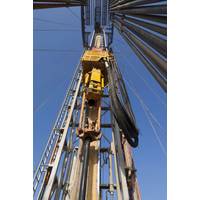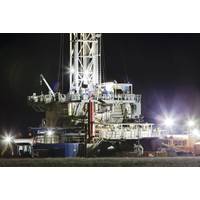Financial Times – March 13,

These are the most popular stories from the Financial Times. These stories have not been verified and we cannot vouch their accuracy. Intel named Lip-Bu Tan, a former board member who has worked in the chip industry for many years, as its new CEO on Wednesday. Pat Gelsinger was ousted by the board of the struggling U.S.-based chipmaker back in December. Keir starmer, the British Prime Minister, will pledge on Thursday to reshape government services by tackling a "cottage-industry of checkers and blocks" and using AI to achieve efficiencies.
When Oil Became Waste

A week of turmoil for crude, and more pain to comeThe magnitude of how damaged the energy industry is came into full view on April 20 when the benchmark price of U.S. oil futures, which had never dropped below $10 a barrel in its nearly 40-year history, plunged to a previously unthinkable minus $38 a barrel.In just a few months, the coronavirus pandemic has destroyed so much fuel demand as billions of people curtail travel that it has done what financial crashes, recessions and…
US Shale CEOs Meet with Saudi Aramco Board
Two of the U.S. shale industry's most prominent executives met with the Saudi Aramco board of directors in Houston on Wednesday.Mark Papa, chief executive of Centennial Resource Development Inc, and Harold Hamm, CEO of Continental Resources Inc, spoke at a regularly scheduled meeting of the directors of the world's largest oil producer.They declined to comment on the meeting.(Reporting by Ernest Scheyder; editing by Jonathan Oatis)
US Oil Industry Set to Break Record, Upend Global Trade

Surging shale production is poised to push U.S. oil output to more than 10 million barrels per day - toppling a record set in 1970 and crossing a threshold few could have imagined even a decade ago. And this new record, expected within days, likely won't last long. The U.S. government forecasts that the nation's production will climb to 11 million barrels a day by late 2019, a level that would rival Russia, the world's top producer. The economic and political impacts of soaring U.S.
Rebounding US Shale Poses Problem for OPEC

U.S. crude oil prices have risen above $60 per barrel which should accelerate shale drilling and production in the next few months, provided the price increase is sustained. U.S. crude futures are trading over $60 for all delivery months between February and August 2018, an increase of about 40 percent since the middle of 2017 (http://tmsnrt.rs/2CW5DIt). And the futures strip for 2019, the benchmark against which U.S. shale producers can execute hedges for next year's output, is trading over $56, up almost 20 percent on the last six months.
WTI Discount to Brent Reflects Logistics Constraints
Even as crude stocks decline elsewhere in the United States, stocks are rising in the Midwest, especially around the delivery point for the New York Mercantile Exchange’s light sweet crude contract at Cushing in Oklahoma. Crude stocks at Cushing hit a low of 56 million barrels on July 28 but have since risen by almost 7 million barrels, according to the U.S. Energy Information Administration (EIA). In the rest of country, commercial crude stocks stood at 426 million barrels on July 28 but have since fallen by almost 24 million (“Weekly Petroleum Status Report”, EIA, Oct. 4). Stocks on the U.S.
Who is Responsible for WTI Weakness?

The U.S. Energy Information Administration (EIA) is distorting oil prices by being far too optimistic in its forecasts for U.S. production, according to Harold Hamm, the chief executive of Continental Resources. Hamm, who also chairs the Domestic Energy Producers Alliance (DEPA), a lobbying group, blames EIA for both the outright decline in U.S. oil prices and their underperformance compared with Brent since June. Hamm faults EIA for being too optimistic about U.S. production, creating an impression there will be surplus of crude and depressing futures prices for West Texas Intermediate (WTI).
US Shale Sector at Critical Price Threshold: Kemp

Forward U.S. oil prices for 2018 have climbed back above $50 per barrel, a level that should be high enough to stabilise drilling activity over the next two months. But if prices continue their current upward trend, shale firms will almost certainly interpret that as a sign to increase output and begin ramping up their drilling programmes again. Shale drilling has proved very sensitive to changes in the value of West Texas Intermediate (WTI) crude, especially the forward prices shale firms rely on to hedge production and reduce their risks.
U.S. Shale Breakeven Price Pegged at $50
U.S. shale producers need a WTI oil price around $50 per barrel to break even, according to an analysis of financial statements for the second quarter. Fifteen of the largest shale oil and gas producers reported total net losses of $470 million for the three months between April and June when benchmark WTI prices averaged $48. Total losses were down from $3.7 billion in the first three months of the year and $7.4 billion in the same period in 2016, according to earnings statements published in the last week (http://tmsnrt.rs/2ftmgnd).
US Shale Breakeven Price Revealed

U.S. shale producers need a WTI oil price around $50 per barrel to break even, according to an analysis of financial statements for the second quarter. Fifteen of the largest shale oil and gas producers reported total net losses of $470 million for the three months between April and June when benchmark WTI prices averaged $48. Total losses were down from $3.7 billion in the first three months of the year and $7.4 billion in the same period in 2016, according to earnings statements published in the last week.
Renewed Slide in Oil Tests U.S. Shale Profits
U.S. independent oil and gas producers came close to breaking even during the first quarter of 2017 thanks to aggressive cost cutting and improvements in well productivity. Some shale producers claim they can drill wells profitably at prices well below $50 per barrel and in some cases below $40. But Harold Hamm, chief executive of Continental Resources , a major producer in North Dakota and Oklahoma, has said oil prices need to be above $50 to be sustainable. Prices below $40 would force producers to idle rigs again…
U.S. Shale Producers Drilling Themselves into a Hole
U.S. shale firms are drilling themselves into a deep hole despite warnings from industry leaders about the risk of flooding the market with too much crude, says Reuters analyst John Kemp. Drilling and production are rising. Prices are declining. Companies are barely breaking even or losing money. Costs are starting to rise. And share prices are sliding. Current oil prices are not sustainable according to Harold Hamm, the chief executive of Continental Resources, said in an interview on June 28.
All Drill, No Frack: US Shale Leaves Thousands of Wells Unfinished

U.S. shale producers are drilling at the highest rate in 18 months but have left a record number of wells unfinished in the largest oilfield in the country – a sign that output may not rise as swiftly as drilling activity would indicate. Rising U.S. shale output has rattled OPEC's most influential exporter Saudi Arabia and pushed oil prices to a near four-month low on Wednesday. U.S. production gains are frustrating Saudi-led attempts by the world's top oil exporters to cut supply, drain record-high inventories and lift prices.
As Trump Targets Energy Rules, Oil Companies Downplay their Impact

President Donald Trump’s White House has said his plans to slash environmental regulations will trigger a new energy boom and help the United States drill its way to independence from foreign oil. But the top U.S. oil and gas companies have been telling their shareholders that regulations have little impact on their business, according to a Reuters review of U.S. securities filings from the top producers. In annual reports to the U.S. Securities and Exchange Commission, 13 of the 15 biggest U.S.
OPEC, Shale Industry Seek Truce: Kemp
The Organization of the Petroleum Exporting Countries (OPEC) and shale producers have fought each other to a draw over the last two years, with neither able to achieve a decisive victory. Now both want a truce. There have been no winners from the oil producers’ civil war of 2014-2016, except for consumers, who have enjoyed two years of cheaper fuel prices. OPEC members are running out of money and need higher prices to reduce their budget deficits and halt the slide in their foreign reserves. And for all their bravado, shale producers and the entire U.S.
Trump's Empty Threat to Stop Buying Saudi Oil: Kemp

President-elect Donald Trump is very unlikely to restrict imports of crude oil from Saudi Arabia despite threats to do so issued during the election campaign. Trump is first and foremost a showman and impresario rather than a policy wonk. Much of what he said on the campaign trail was intended to mobilise support rather than provide a detailed programme for government. The media "never takes (Trump) seriously but it always takes him literally. I think a lot of voters who vote for Trump take Trump seriously but not literally," as technology billionaire Peter Thiel observed in October.
Harold Hamm Tops Trump Short-list for US Energy Secretary
Continental Resources Chief Executive Harold Hamm is at the top of President-elect Donald Trump's list to serve as energy secretary, according to U.S. Representative Kevin Cramer of North Dakota, a Trump energy adviser who confirmed he is also under consideration for the job. "In my view, Harold Hamm has the right of first refusal," Cramer told Reuters in a telephone interview. "In my view, he's likely to be asked. Hamm, 70, became one of America's wealthiest men during the U.S.
Big Oil Revels in Trump Triumph
The U.S. energy industry on Wednesday reveled in Republican Donald Trump's presidential victory, expecting him to be a strong advocate for more oil and gas output and to cut red tape that has held back billions of dollars of investment in new projects. The world's largest energy market saw a boom in oil and gas output under Democratic President Barack Obama's administration, as improved technology led to the development of shale energy reserves that had previously been too expensive to produce.
Oil Industry Workers Split Between Trump and Clinton
U.S. oil and gas industry workers have contributed only slightly more money to the campaign of Democrat Hillary Clinton than to Republican Donald Trump since the two clinched their parties' nominations for the White House, according to Reuters' review of federal disclosures. The nearly even support suggests ambivalence in the industry between two rivals who have put forward wildly different energy visions. Trump calls for a drastic reduction in regulations to bolster drilling, while Clinton advocates tougher environmental protections and more renewables.
Does OPEC Deal spell Relief for U.S. Shale?
It was a moment U.S. shale oil producers have been waiting on for more than two years: OPEC nations finally agreed to cut production on Wednesday in a move that lifted low prices ravaging their budgets. Two sources in the Organization of the Petroleum Exporting Countries said the group would reduce output to 32.5 million barrels per day (bpd) from current production of 33.24 million bpd, by around half the amount of global oversupply. The agreement effectively establishes a floor on prices near $50 a barrel - around where many U.S. shale oil companies can make money and drill new wells.